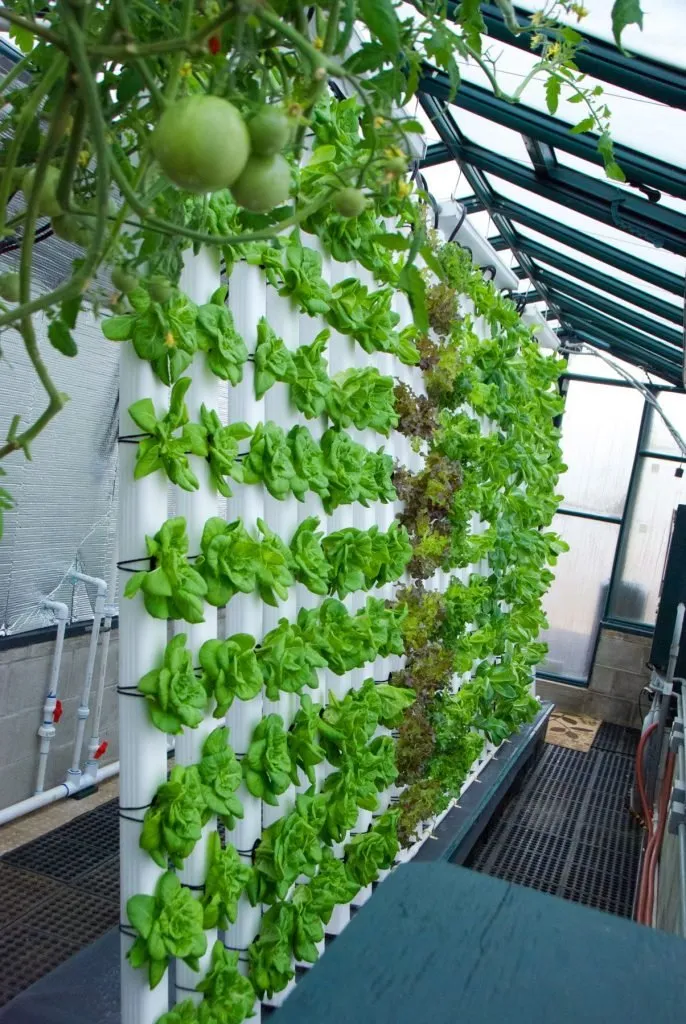Creating Your Own Vertical Aquaponics System: A Beginner’s Guide

Have you ever dreamed of having fresh, homegrown produce right at your fingertips, no matter how much space you have? That’s the magic of vertical aquaponics! It’s a fascinating blend of raising fish and growing plants in a symbiotic system that’s perfect for both beginners and experienced gardeners.
At Robert Kline Art, we’re passionate about helping you explore the wonders of DIY and crafting, and today, we’re diving deep into the world of vertical aquaponics. This comprehensive guide will equip you with everything you need to know, from understanding the basics to building your very own system. Let’s get started!
Understanding Vertical Aquaponics: A Symbiotic Dance of Fish and Plants
Imagine a system where fish waste becomes plant food, and in return, plants purify the water for the fish. That’s aquaponics in a nutshell! Vertical aquaponics takes this concept a step further, maximizing your growing space by building upwards.
This method utilizes towers or columns to grow a variety of plants, making it an ideal solution for urban gardens, balconies, or any space-constrained environment.
Why Vertical Aquaponics?
Vertical aquaponics offers a plethora of benefits:
- Space-saving: Perfect for limited areas, allowing you to grow more in less space.
- Water conservation: Uses significantly less water than traditional gardening.
- Faster growth: Plants thrive in nutrient-rich water, leading to quicker harvests.
- Organic produce: No harmful chemicals or pesticides are needed.
- Educational and rewarding: An engaging and educational project for all ages.
Building Your Own Vertical Aquaponics System: A Step-by-Step Guide
Ready to embark on your vertical aquaponics adventure? Here’s a detailed guide to get you started:
Materials You’ll Need:
- PVC pipes (4-inch diameter): Approximately 20 feet
- PVC elbows (4-inch diameter): 4-6
- PVC T-connectors (4-inch diameter): 4-6
- 100-gallon container (or similar food-grade container)
- Aquarium tubing: Approximately 20 feet
- 4-way splitter (for 1-inch pipe)
- Plastic cups
- Scraps of cloth (burlap sacks or similar)
- Electrical tape
- Aquarium pump (capable of moving 400 gallons per hour)
- Filter
- Grow media (Rockwool or pond filter foam)
Step 1: Constructing the Framework
- Cut six 1-foot long pieces of 4-inch PVC pipe. Drill two evenly spaced holes in each using a hole saw.
- Drill a 1-inch drainage hole in one of the remaining 1-foot pieces.
- Assemble the pipes into a rectangular shape using 90-degree elbows and T-connectors. Secure all joints with electrical tape.
Step 2: Creating the Vertical Towers
- Cut four 2-3 foot long pieces of 4-inch PVC pipe (adjust height as needed).
- Drill evenly spaced 1-inch holes along the length of each pipe, alternating between 5 and 4 holes in a spiral pattern.
- Insert these vertical pipes into the upward-facing T-connectors of the rectangular base.
Step 3: Positioning Your System
- Choose a suitable location for your system, ensuring easy access for maintenance.
- Place your fish tank (100-gallon container or similar) on a sturdy base.
- Position the PVC tower structure on top of the fish tank, distributing weight evenly.
Step 4: Preparing the Grow Cups
- Poke several drainage holes in the bottom of each plastic cup.
- Insert the cups into the horizontal holes of the PVC towers.
Step 5: Adding Grow Media and Burlap
- Cut strips of burlap sacks and hang them inside each vertical pipe.
- Fill the grow cups and vertical pipe holes with Rockwool or pond filter foam.
Step 6: Installing the Pump and Plumbing
- Place the aquarium pump inside the fish tank, slightly elevated from the bottom.
- Connect the pump to the base of the vertical towers using aquarium tubing.
- Use a 4-way splitter to ensure even water distribution to each tower.
Step 7: Cycling the System and Adding Fish and Plants
- Fill the tank with water and allow it to dechlorinate for several days.
- Monitor water parameters (pH, ammonia, nitrates, temperature).
- Introduce a few hardy fish (like tilapia) to kickstart the nitrogen cycle.
- Once the system stabilizes, gradually add more fish and plants.
 vertical aquaponics
vertical aquaponics
Image Alt: A thriving vertical aquaponics system with lush green plants.
Choosing the Right Fish and Plants
For beginners, tilapia is a great fish choice due to its hardiness and adaptability. As your system matures, you can explore other options based on your climate and preferences.
Leafy greens like lettuce, spinach, and herbs thrive in vertical aquaponics systems. Tomatoes are also a popular choice, but they require a more established system with higher nutrient levels.
Tips for Success:
- Research thoroughly: Invest time in understanding aquaponics principles and best practices.
- Start small: Begin with a smaller system and gradually expand as you gain experience.
- Monitor regularly: Keep a close eye on water parameters and adjust as needed.
- Be patient: Aquaponics is a rewarding but gradual process. Allow time for your system to mature.
Robert Kline Art: Your Partner in Creativity
At Robert Kline Art, we celebrate the joy of crafting and bringing your creative visions to life. This vertical aquaponics guide is just one example of the many DIY adventures we’re passionate about sharing.
Explore our website for more inspiring ideas, tips, and resources to fuel your crafting journey. From handmade gifts to unique home décor, we’re here to guide and inspire you every step of the way.
Over to You:
Have you tried vertical aquaponics? We’d love to hear about your experiences! Share your thoughts, questions, and tips in the comments below. Let’s learn and grow together!
About the Author:

Image Alt: Nick Brooke, aquaponics expert and author
Nick Brooke is an aquaponics enthusiast dedicated to sharing his knowledge and passion for sustainable gardening. He believes that everyone should have access to fresh, healthy food, regardless of their space limitations.
